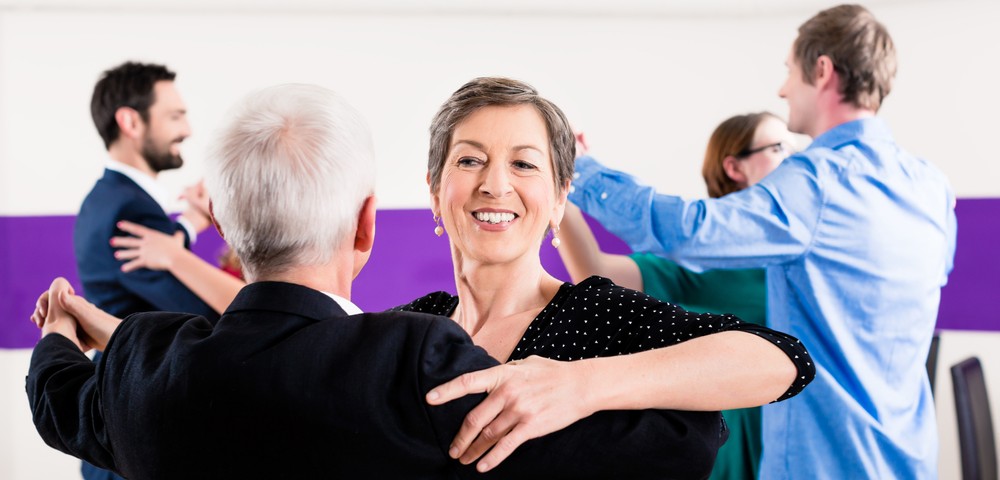Strategies to Combat Freezing in Parkinson’s Patients

“Freezing” is when an individual suddenly feels like they’re glued to the ground. Parkinson’s disease patients often experience freezing during the late stages of the disease. It can occur while the person is in motion or after they’ve been stationary and then attempt to move. It’s associated with complicated movements like dodging obstacles or getting up from a chair.
The loss of automatic motor skills affects one’s sense of control and even their safety, as about 38 percent of Parkinson’s patients fall each year. Tracking when your struggles occur can help you to manage them, allowing you to challenge how frequently freezing occurs.
What causes freezing?
Not everyone with Parkinson’s experiences freezing, and the exact cause of freezing is unknown. But our relationship to balance gives insight into potential causes. Parkinson’s patients experience changes in the brain that affect the way they walk.
Dr. Howard Weiss, in his blog for the Parkinson Foundation of the National Capital Area, writes, “’Freezing of gait’ is often triggered by specific activities or circumstances that demand switching between motor actions.” While learning to walk, we strengthen the neural pathways that allow us to balance. But Parkinson’s patients see a degradation of these pathways, leading to difficulty in stabilization.
What freezing is like for my dad
Like many Parkinson’s patients, my dad notices that he usually only freezes when he’s not on his medication. It usually happens while he’s moving through doors: “When you pivot you’re worried about losing your balance. That’s why we shuffle our feet and take baby steps initially. Once I’m moving I’m fine,” he says.
Since he’s worried about maintaining balance while navigating, it’s possible that there’s a connection between fear and freezing. Continuous motion seems to bypass the risk of freezing, while shifting motion types can present challenges.
So, what can you do to manage freezing?
- If you find yourself getting stuck in particular places, try changing the layout of your living space. Freezing can occur because you have to pivot around furniture.
- Exploring rhythm helps you to maintain momentum where you previously got stuck. Some Parkinson’s patients explore strategies like dancing, counting, marching, and shifting their weight from side to side.
Thinking outside of the box can assist you in unfreezing yourself. Dad finds that his posture can affect whether or not he’s able to unfreeze himself: “When I freeze, I stand up straight. If I move away from gravity, I can unfreeze. But if I’m hunching over, gravity pulls me toward the floor and it takes longer to get out of the freeze. And once I move my left foot forward, I can unfreeze. Freezing’s scary. That’s why a lot of Parkinson’s patients fall.”
Exercise and physical therapy can be game changers
Joining a Parkinson’s-specific fitness program like Rock Steady Boxing helps you to strengthen your motor functions. This ultimately allows you to stabilize with more ease. Since Parkinson’s patients often see a decline in motor skills, exercise can offer a good option for strengthening those skills. Rock Steady also uses portions of the class to teach Parkinson’s patients how to fall.
According to Dad, “About once a month or so, they’ll put mats on the floor and show you proper falling and rolling technique. They try to do things in boxing that’ll help people with different stages of Parkinson’s.”
While the exercise portion of Rock Steady Boxing is valuable in itself, learning how to fall helps mitigate risk as much as possible.
Freezing is a frightening phenomenon, but there are ways you can manage this symptom. Stay positive! Try to find Parkinson’s fitness classes or challenge yourself with rhythmic solutions to freezing. Other patients have found that these strategies can assist in the management of motor-related functions.
***
Note: Parkinson’s News Today is strictly a news and information website about the disease. It does not provide medical advice, diagnosis or treatment. This content is not intended to be a substitute for professional medical advice, diagnosis, or treatment. Always seek the advice of your physician or another qualified health provider with any questions you may have regarding a medical condition. Never disregard professional medical advice or delay in seeking it because of something you have read on this website. The opinions expressed in this column are not those of Parkinson’s News Today or its parent company, Bionews Services, and are intended to spark discussion about issues pertaining to Parkinson’s disease.







John c huteson
I REALLY LIKED READING ABOUT REAL LIFE SITUATIONS I CANT TALK AND CAN BARELY USE THIS KEYBOARD BAD EYES AND MY FINGERS DONT WORK PROPERLY I HAVE GROWN CHILDREN BUT MY WIFE AND I HAVE VERY LITTLE CONTACT WITH ANYONE EXCEPT A FEW RELATIVES WE DONT DRIVE HER EYES ARE BAD TOO WE WENT TO A FEW MEETINGS WITH THE LOCAL GROUP BUT THEY ALL SEEMED SO NORMAL I AM NOT GOOD ON INTERNET I LIKE TO LOOK ON FACEBOOK I AM TIRED LATER JOHN CENTNER HUTESON THE DALLES OREGON